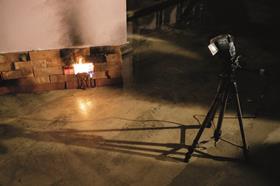Final report also calls for an increase in the frequency of testing

Product testing will be required to be carried out by independent third party test houses rather than manufacturers under plans laid out in Dame Judith Hackitt’s final report on building safety.
The report states that the testing of all products critical to the safety of high-risk residential buildings (HRRB) should be subject to independent third-party certification.
Hackitt also said the product testing regime should be more transparent as products could fail tests several times before passing with no requirement to make this information public.
She stopped short of calling for details of individual tests to be made public, citing commercial confidentiality. Instead all test houses should be required to produce an annual report: “providing summary details of tests carried out and the number of passes and failures reported”.
Hackitt also recommended an increase in the frequency of testing of products integral to HRRB safety. Currently product certification bodies including the British Board of Agrement only require new tests when manufacturers make significant changes to their products.
The report said: “Manufacturers must retest products that are critical to the safety of HRRBs at least every three years. Manufacturers should consider the need to test more frequently, focusing especially on the testing of products as they operate in systems rather than individual elements.”
Hackitt’s report backed the open government consultation on desktop studies, but said it was imperative there were changes about who was allowed to carry out the controversial ‘desktop studies’ as a route to compliance with building regulations.
The report recommends that desktop studies, now referred to ‘assessments in lieu of tests’ [desktop studies] should only be carried out by test houses certified to carry out full scale tests of cladding systems to test standard BS8414, the standard on which desk top studies are based. As the BRE is the only test house in the UK with the facilities to carry out tests to BS8414 this could restrict capacity to carry out the assessments.
Hackitt said her recommendations meant more product tests would be needed and said more test houses were established and certified
Recommendations on product testing
Recommendation 7.1
a. A clearer, more transparent and more effective specification and testing regime of construction products must be developed. This should include products as they are put together as part of a system.
b. Clear statements on what systems products can and cannot be used for should be developed and their use made essential. This should ensure significantly reduced scope for substitution of any products used in a system without further full testing. Until such time, manufacturers should ensure that they adhere to the current limitations set out in classification reports in the current regime.
c. The scope of testing, the application of products in systems, and the resulting implications must be more clearly communicated in plain, consistent, nontechnical language.
Recommendation 7.2
a. Manufacturers must retest products that are critical to the safety of HRRBs at least every three years. Manufacturers should consider the need to test more frequently, focusing especially on the testing of products as they operate in systems rather than individual elements.
b. The testing of products that are critical to the safety of HRRBs should be subject to independent third party certification.
c. The introduction of the JCA [Joint Competent Authority] should drive the introduction of reactive testing when particular issues of concern arise regarding products installed that are critical to the safety of HRRBs.
d. Additional test houses should be established and certified.
e. All test houses should produce an annual report providing summary details of tests carried out and the number of passes and failures reported.



























No comments yet